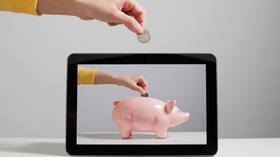Fed explores future of ‘digital dollar’

A Central Bank Digital Currency (CBDC) should “complement, rather than replace current forms of money and methods for providing financial services,” the Federal Reserve Board of Governors said in a study released on Thursday, which it claimed was the first step in a public discussion about a “digital dollar.”
Clocking in at just 40 pages, including appendices and footnotes, the study examines the pros and cons of a CBDC and solicits feedback from the public and the authorities.
“We look forward to engaging with the public, elected representatives, and a broad range of stakeholders as we examine the positives and negatives of a CBDC in the US,” Fed Chairman Jerome Powell said in a statement.
Introduction of the digital dollar would “represent a highly significant innovation in American money,” the study said, which is why the Fed “does not intend to proceed with issuance of a CBDC without clear support from the executive branch and from Congress, ideally in the form of a specific authorizing law.”
The Fed noted that the dollar currently consists of three types of money – the physical currency issued by the Federal Reserve, the digital money held by commercial banks, and “nonbank money,” a digital account of transactions used by other financial service providers.
While setting up a Fed-backed digital dollar would offer safe and fast payments between Americans and even commerce with other countries, “there may also be downsides,” such as questions about how the government could preserve citizens’ privacy, combat illicit transactions, and “preserve monetary and financial stability,” the Fed said.
Current digital payment methods tend to fail during “natural disasters or other large disruptions,” forcing affected areas to rely on cash transactions, the study noted.
The US central bank also warned that other countries or currency unions could roll out their own CBDCs that may end up more attractive than the existing forms of the US dollar, posing a threat to its status as the world’s reserve currency. A “US CBDC might help preserve the international role of the dollar,” the Fed said.













